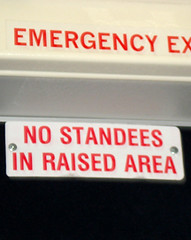
And so it begins. The Christian Science Monitor has become the first national newspaper to abandon print and move its daily content online. While the publication will print a weekend magazine, the move represents a shift that many other national dailies will eventually follow.
“Everybody’s talking about new models,” John Yemma, editor of The Monitor said. “This is a new model.”
According to The New York Times, smaller papers have already made the transition, including The Capital Times in Madison, Wis. and The Daily Telegram in Superior, Wis., which will only publish a print edition two days a week.
The downside, as most newspapers know, is that such moves cannot replace the revenue gap between print and online ads. It will not, at least not as long as newspapers continue to look at the new space like print. Instead, they might consider entirely new constructs.
One of the better examples some newspapers might follow is Hulu, which offers free, ad-supported videos of TV shows and movies from NBC, FOX, and other networks. The joint project has been successful enough to beat YouTube hands down.
Within a few months, Hulu has grown to 142 million streams with 6.3 million unique viewers, according to Nielsen Online. It is now the sixth-most-popular online video brand in the United States, surpassing ESPN, CNN, MTV, and Disney.
Part of the success is related to its advertising approach. Fewer advertisements means fewer program interruptions for viewers and less competition for advertisers. It's a win-win, with some additional twists that include viewer rated commercials, ad selection, and interactive games.
“The notion that less is more is absolutely playing out on Hulu,” Jason Kilar, the chief executive of Hulu, told The New York Times. “This is benefiting advertisers as much as it is benefiting users.”
It only makes sense that broadcast would weather convergence a little easier than print, which is why it might be time for print to give up traditional modeling all together. It needs to think more like broadcast and I don't just mean arming journalists with video cameras.
What I mean is: newspapers that are migrating more content online need to quickly develop better advertising vehicles than banner ads to stay viable. The only alternative is to continually cut staff to match shrinking circulations, which no one can really afford to do anymore. Why?
Journalists are already overtaxed on time. The result is that many newspapers have given up on digging deeper and vetting facts in favor of "he said, she said" reporting. "He said, she said" reporting only resembles objective reporting in that it leaves readers to sort out which "he" or "she" might be right or telling the truth. Unless newspapers hold a higher standard and provide trusted content, it seems to me they will risk losing even more readers in a space where content is still king.





















